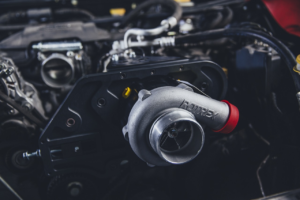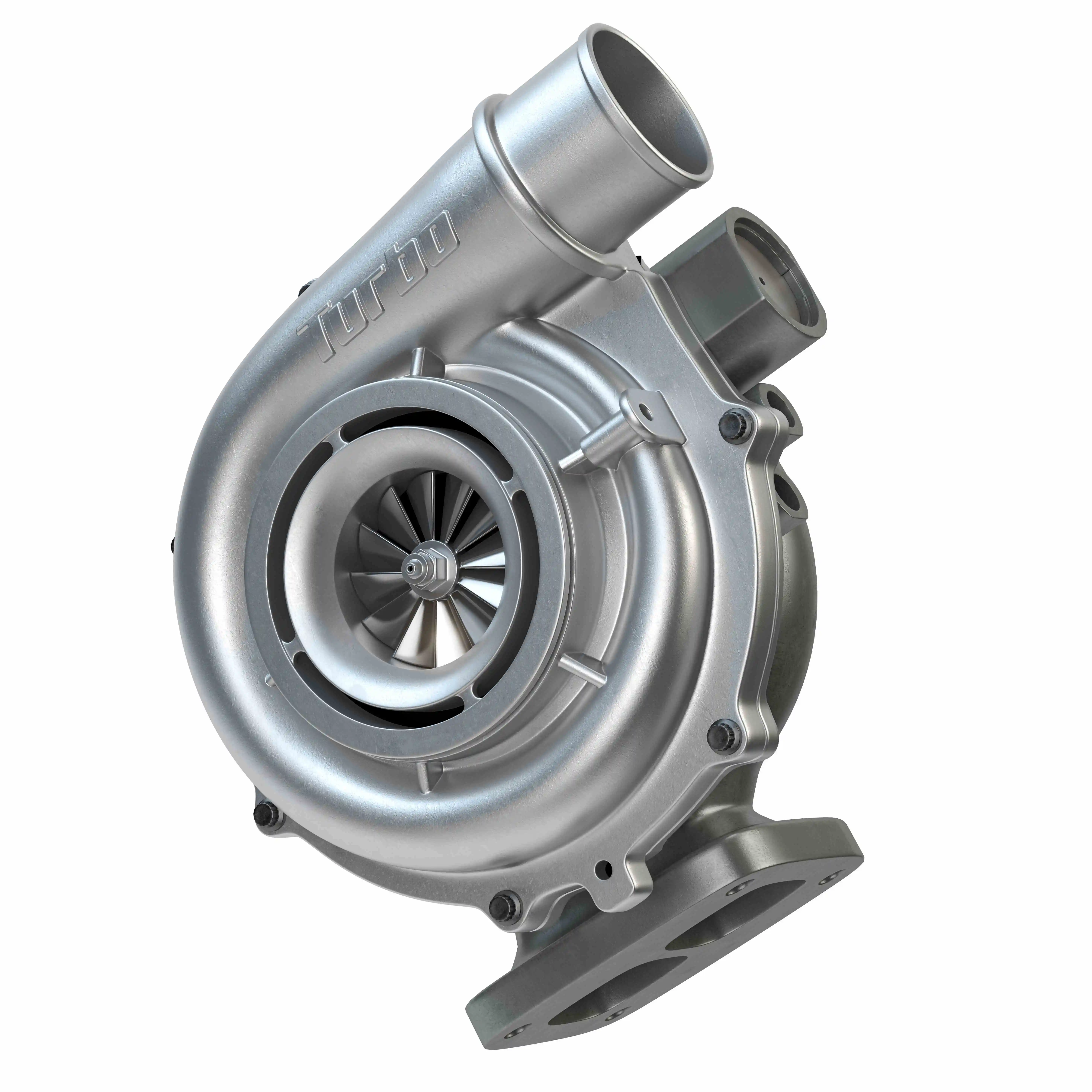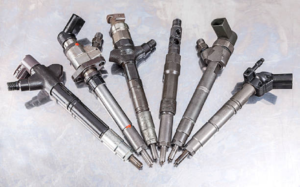The race for speed and efficiency in today’s ever-evolving automotive industry is fiercer than ever. With car lovers and manufacturers seeking higher performance, the battle between turbocharging and supercharging intensifies. These two power-boosting appliances are crucial in forced induction, but which is the greater? Let’s find out.

Turbocharger Vs Supercharger: Understanding Forced Induction
To get a complete understanding of what sets the turbocharger and supercharger apart, one should first explore the concept of forced induction.
In its simplest form, turbocharging, or supercharging, as it is commonly referred to, is a technique used in internal combustion engines to increase the power output by compressing fresh air to be admitted into the combustion chambers. It also helps to increase horsepower and, therefore, the car’s performance in general.
An internal combustion engine operates by converting fuel into power, causing a controlled explosion within the cylinders. This process requires three essential elements: air, fuel, and a spark to ignite the fire in the consumers available, which is a good analogy. Another way to increase the power output is to burn more fuel or compress the air entering the engine, which can be done using a turbocharger or supercharger.
Turbo vs Supercharger: Functionality Breakdown
When comparing turbochargers and superchargers, it’s essential to understand their functionality and how they differ in boosting engine performance. Here’s a look at their functionality:
1. Turbos:
- Turbos utilize engine exhaust to drive a turbine, which further drives a compressor, thus injecting more air into the engine.
- Today, turbos can rev up to 200000 rpm, thus improving the performance of engines in modern cars.
- The exhaust gases make turbos extremely efficient, reusing energy that would have otherwise been lost in the air.
2. Supercharger:
- As for the superchargers, these devices are mechanically connected to the engine crankshaft, often through the belt.
- This direct connection allows superchargers to provide power output instantly without delays, as is usual with turbochargers.
- Superchargers, on the other hand, are primarily driven off the engine and are typically less efficient than turbochargers.
Other than the functionality, the following things make the turbochargers and superchargers different.
| Feature | Turbochargers | Superchargers |
| Operation | Driven by engine exhaust gases | Driven by the engine via belt or chain |
| Power Delivery | It may have turbo lag; power boost at higher RPMs | Immediate power delivery |
| Efficiency | Highly efficient; reuses exhaust energy | Less efficient; draws power from the engine directly |
| Power Gain | Significant power increase at higher RPMs | Immediate power gain at lower RPMs |
| Fuel Efficiency | Can improve fuel efficiency due to lower displacement engines | Generally lower fuel efficiency compared to turbos |
| Application | Common in modern performance vehicles | Popular in muscle cars, racing vehicles |
| Cost | Often cost-effective due to engine downsizing | Generally more expensive to install and maintain |
| Maintenance | Typically, lower maintenance requirements | Higher maintenance due to direct engine connection |
How Does a Turbocharger Operate?
A turbocharger is an air compressor induced by the engine’s exhaust to give extra power and torque. Nonetheless, the tiny turbochargers provide a considerable power boost. The major subassemblies of a turbocharger are the turbine assembly and the compressor assembly. The turbine, which consists of a turbine wheel and turbine housing, directs the exhaust gases out of the engine to the turbine wheel when the accelerator is depressed. These gases turn the turbine wheel and are expelled through the exhaust outlet.
The rotation of the turbine turns the contrary of the compressor wheel in the system to move fast. This high-velocity spinning action pulls in and squirts air, which is then taken into the engine. The manipulation of air increases the fuel suction and causes the engine to produce more heat, thus more power. A turbocharger can add up to 30-45 horsepower to the engine capacity and, therefore, increase the performance level.
How Does a Supercharger Work?
Like a turbocharger, a supercharger is also an air compressor that draws in more air and thus creates a power boost. Diesel superchargers are specifically designed to work with diesel engines, providing them with the necessary power boost for heavy-duty performance. These superchargers enhance the engine’s efficiency and power output by forcing more air into the combustion chamber.
Nevertheless, while superchargers are similar to turbochargers, they do not work using exhaust gas. It should be noted that the central supercharger system is most frequently a pulsed wheel driven by the engine, although there are numerous options for superchargers.
A supercharger delivers air during the induction stroke above the atmospheric press of the crank press without sucking a vacuum. By doing so, it is possible to have more air through which more fuel may be burnt, thus improving the engine power. Generally, a supercharger can increase horsepower by about 46% and torque by about 31%, making the vehicle perform better.
Supercharger Vs Turbo: Pros and Cons
The Pros of Turbochargers are:
- Fuel Efficiency: Turbochargers improve fuel efficiency and are environmentally friendly, as they recycle exhaust gases to boost the engine. They can enhance fuel economy by 20-40%.
- Altitude Performance: Turbos excel at high altitudes with lower air density, making them ideal for mountainous regions.
- Engine Suitability: Turbos are excellent for small engines, providing significant power without requiring a large engine size.
- Sound: Turbochargers are quiet, producing a low whistling or whooshing noise.
- Popularity: They are increasingly favored by luxury car manufacturers like BMW, Mercedes, Porsche, and Range Rover.
The Cons of Turbochargers are:
- Turbo Lag: One downside is turbo lag, a delay between pressing the accelerator and the turbo kicking in due to the time needed to generate sufficient exhaust gases.
The Pros of Superchargers are:
- Instant Power: Superchargers deliver immediate power since they are directly connected to the engine, eliminating turbo lag.
- Engine Performance: They offer a tremendous straight-line acceleration and are ideal for V-shaped engines.
The Cons of Turbochargers are:
- Fuel Consumption: Superchargers can be less efficient as they draw power from the engine, leading to higher fuel consumption.
- Altitude Performance: While applicable at high altitudes, they are less effective than turbochargers in compressing thinner air.
- Sound: Superchargers are louder, producing a distinct whining noise.
- Niche Application: Often found in specific performance cars and muscle cars.
Supercharger Vs Turbocharger: Which Is Faster?

Regarding speed, there is a difference between a supercharger and a turbocharger. Although they both increase engine power by compressing more air into the combustion chamber, they differ in performance.
Superchargers are mechanically operated by the engine and deliver power instantly without any delay. They also offer immediate response to the throttle, which makes them appropriate for use in racing and high-performance vehicles. Nonetheless, since the engine drives them, superchargers tend to be less efficient in terms of fuel consumption.
Turbochargers, in contrast, harness exhaust gases to turn a turbine, which in turn powers a compressor to force more air into an engine. Turbochargers, however, can have the problem of ‘turbo lag,’ where there is a delay between the driver flooring, the accelerator, and the power boost. Still, they are usually more efficient and can produce a higher maximum power. Due to technological enhancement, turbo lag has been reduced, making turbo-charged engines offer better speed and performance.
Turbocharger Vs Supercharger: Which Is Better a Fit for Your Car?
Choosing between a turbocharger and a supercharger depends on what the car will be used for. If, for some reason, you need a powerful and very maneuverable vehicle at high altitudes and high speeds, then the best option would be a turbocharger. But if you want power at the click of a button without having to wait for a turbo to spool, then a supercharger is the answer.
The Twin Charging Solution
Some people opt for twin charges in very high-end cars, which means the vehicle has both a turbocharger and a supercharger. This qualitative method, used starting in the 1980s, can offer power and speed like no other if it is used with the professional help needed to employ it.
Are You Looking For Expert Turbocharger Repair In Burnsville, Minnesota? Drive Down To Diesel Components Inc. Today!
This article will help you make the right decision between these two forced inductions.
If you need further assistance with your turbocharger, visit Diesel Components Inc. in Burnsville, Minnesota. We are a regional distributor and authorized repair service provider for brands like AiResearch, GARRETT, and Schweitzer. Contact our team of professionals for any turbocharger issues on your diesel engine.







